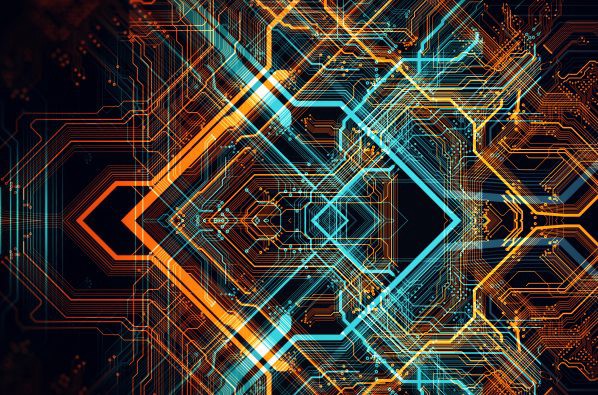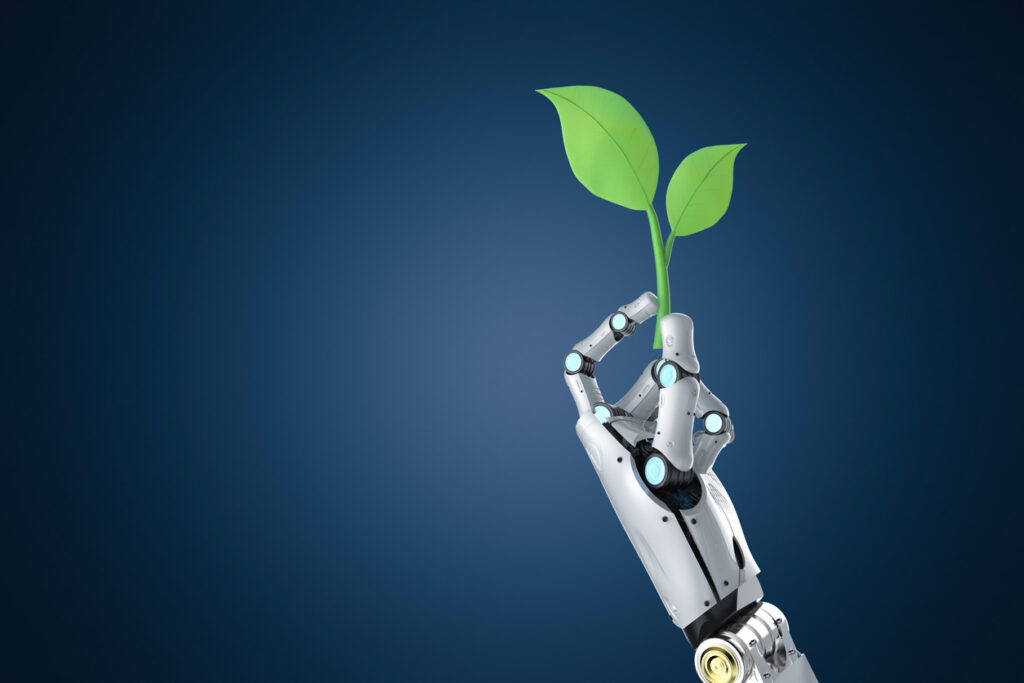By Dipul Patel, CTO
The term Cryptocurrency seems a little complicated at first glance. Many people, including those who work in high-tech disciplines, feel overwhelmed by the new terminology. One of these terms that causes a lot of confusion is “mining”, which describes an important aspect of how bitcoin and many other cryptocurrency networks function.
The good news is that mining isn’t all that confusing once you understand what it is and how it works. In fact, if you have basic knowledge of computer hardware, you probably already understand a good deal about mining and the hardware that makes it possible — it’s just that nobody has ever explained it in a way that makes sense.
In part 1 of my blog series, I am going to demystify what “mining” is, explain the role that computer chips play in the process, and how cryptocurrency mining is actually driving the evolution of chips in exciting new directions.
“The more specialized a chip is, the better it is at doing a particular activity which requires enormous processing power…” –Dipul Patel
Chips 101 and How They Fit into the Mining Phenomenon
Before we dive into mining, we should talk about the magical hardware that enables our current way of life — chips.
What are “chips” exactly?
Well, it’s a broad term defining “integrated circuits (IC).” In other words, a long time ago, very smart people figured out how to embed entire circuits onto pieces of silicon — and changed the world forever. Since then IC’s are embedded into many materials — not just silicon, and there are many types of ICs — so we call them all chips. Being named Dip, I think it’s spectacular!
There are many kinds of chips, including memory chips, sensors, modems, clocks, and more. One of the most important classifications of chips in any computer is processors. These are the chips that handle actual computational tasks (basically doing math very quickly) which allow the rest of the system to function properly. Simply put, processor chips put the “computing” in computers.

The wonderful world of chips
The most well-known type of processor is the Central Processing Unit (CPU), which acts as the “brain” of a computer. A CPU is the most important component in any computer and acts as a “general purpose” processor. CPUs are powerful and can be used for just about any computing task. They may be the most well-known. However, they are not the most efficient processors out there. One way to think of them is like an Abrams tank (one of the most advanced Tanks in use today; a powerful machine that will take you just about anywhere you want to go, but one that is also slow and uses a ton of energy compared to other, more specialized machines.
Let’s explore five other classes of processors which carry out important, more specific functions:
- Graphics Processing Unit (GPU). A GPU is a processor specifically designed for 3D image rendering, vector math, parallelization, physics interactions, and more. These are very computationally-demanding tasks, and would place a huge burden on the CPU. The GPU however excels at these tasks and handles them so that the CPU does not have to. (Conversely, a GPU would be terrible for general processing, because that’s not what it is designed to do.) Computers designed specifically for gaming or those used for high-end 3D animation have high-powered GPUs which allow them to perform these activities.
- Accelerated Processing Unit (APU). This term was created by AMD (Advanced Micro Devices, a leading processor manufacturer). Basically, it’s a CPU with integrated graphics (meaning it is integrated directly into the motherboard) making it a hybrid between a CPU and GPU on a single chip. APUs are used in products where a dedicated GPU might not be a good fit, like smaller laptops, tablets and smartphones.
- Digital Signal Processor (DSP). A DSP is a processor designed to process continuous signals, like audio They perform functions like compression, sampling, and filtering extremely efficiently (think of those switches on synthesizers or guitar amps). Similar to rendering graphics, this activity would be very demanding for a CPU, but the DSP can handle them easily. However, they can’t really do anything besides this. A DSP is sort of like a jet ski; extremely fast in water, but totally useless anywhere else.
- Field Programmable Gate Array (FPGA). This is a chip that is designed to be reprogrammable for specific uses after manufacturing. They can be programmed for specific tasks, and then reprogrammed to do something else later on. This is basically an application that needs highly specialized computations, but computations that may change or shift. Typically FPGAs are too expensive for commercial applications and are used in more complex systems, usually during the development phase and for proprietary protocols. During my time with Locked Martin, for instance, we used FPGA chips in the development of new radar systems.
- Application Specific Integrated Circuit (ASIC): As the name implies, ASICs are built with a specific use in mind. If we stick with our motor vehicle metaphors, an ASIC is like a garbage truck, which is engineered to do something no other vehicle can do. ASICs are quite challenging and expensive to build, but they are unbeatable when used for the task they are designed for. When a GPU or FPGA is frequently used to perform a singular function, it could warrant the development of a new ASIC for that activity. This is essentially what happened over the past decade with cryptocurrency mining. In the next part of this blog, I will explain how ASICs are evolving due to many specific applications (such as mining).
To further complicate things, it’s important to note that manufacturers sometimes use ASICs, or combinations of ASICs to create other applications. For instance, modern GPUs implement ASICs to create a GPU.
Mining 101: High-Performance Computing (HPC) by Another Name
Now that I have discussed chips, I will explore what mining is, and how the two are related.
When people say they are “mining” bitcoin or some other cryptocurrency, what they are really describing is the use of hardware to engage in high-performance computing (HPC) activity — specifically, they are validating transactions on the bitcoin network (or the network for the other respective cryptocurrency). Confused? Don’t worry, this is actually not as esoteric as some people make it sound.
Bitcoin (or “BTC”) is designed to be decentralized. This means that no single entity controls the creation or supply of BTC in circulation, nor can it be determined which transactions on the network are valid. Instead, this is handled by “miners”, or people on the bitcoin network who use the processing power of their computers to solve an extremely complex mathematical puzzle. When the puzzle is solved, the miner validates a group of BTC transactions and adds them to the next “block” of transaction records on the bitcoin network blockchain.
Anyone who has both internet access and hardware with sufficient processing power can provide processing power to the network, and thus mine bitcoin. The challenge is that this type of HPC requires a lot of processing power, which uses a lot of electricity, and thus costs a great deal of money… So how do you incentivize anyone to do this in the first place? With a reward, of course!
All miners are actually competing to be the first ones to solve the mathematical puzzle. The more processing power you have, the more likely you are to be the winner. The winner receives a “block reward” which consists in part of BTC collected by the network in the form of transaction fees, as well as newly created bitcoins. This process repeats approximately every 10 minutes, which means every 10 minutes, miners have a chance to win BTC. (For more details on mining difficulty and why this process repeats every 10 minutes approximately, check out our recent blog, the Golden Triangle).
Mining is thus simultaneously the way that BTC transactions are verified, the reason why the network collects transaction fees, and the method by which new bitcoins are generated and added to the circulating supply.
Let’s return to the topic of chips. As you read through the different categories of chips above, you probably noticed a general trend: as you move from CPU to ASIC, you trade extreme flexibility for extreme specialization. The more specialized a chip is, the better it is at doing a particular activity that requires the enormous processing power of similar types of math being run trillions of times a second — and crypto mining has become one of the most computationally demanding activities out there.
Mining wasn’t always considered high-performance computing, however; back in 2009 when bitcoin first appeared, you could profitably mine bitcoin on a laptop — or more specifically, with a laptop’s CPU. As bitcoin mining became harder, miners switched to souped-up desktop computers with powerful GPUs.
This trend hasn’t let up…in fact, mining is so big now that it is actually shaping the evolution of chips as we know them.
Today, if you want even the smallest chance of winning a bitcoin block reward, you need to have some serious processing power. It’s gotten to the point where entire warehouses are filled with racks of specially-designed ASIC mining “rigs” that do nothing but attempt to solve for block rewards.
This significant use of power is what led us to seek a more sustainable way to mine bitcoin and other crypto assets with the Soluna project.




